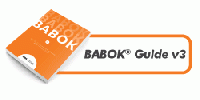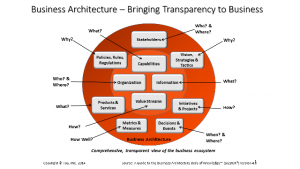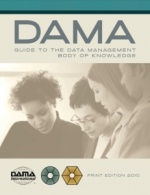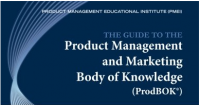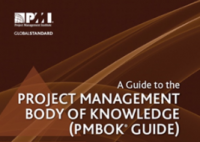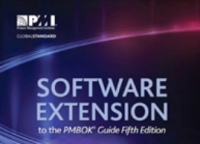Difference between revisions of "Main Page"
(Updated link to Software Extension to the PMBOK SWX) |
|||
| (80 intermediate revisions by 4 users not shown) | |||
| Line 1: | Line 1: | ||
| − | < | + | <table border="3"> |
| + | <tr><td> | ||
| + | <table> | ||
| + | <tr> | ||
| + | <td width="60%"><font color="#246196">'''Welcome to the initial version of the EITBOK wiki. Like all wikis, it is a work in progress and may contain errors. We welcome feedback, edits, and real-world examples. [[#How to Make Comments and Suggestions|Click here]] for instructions about how to send us feedback.''' </font></td> | ||
| + | <td width="20%">[[File:Ieee logo 1.png|100px|center]]</td> | ||
| + | <td width="20%"> [[File:Acm_logo_3.png|175px|center]]</td> | ||
| + | </tr></table> | ||
| + | </td></tr></table> | ||
| + | In this guide, the IEEE Computer Society, in cooperation with the ACM IT2017 curriculum project, establishes a baseline for the body of knowledge for the practice of '''[http://eitbokwiki.org/Glossary#eit Enterprise information technology (EIT)]'''. This work has been undertaken as part of the Society’s responsibility to promote the advancement of both theory and practice in this field. It is written by practitioners, for practitioners, as well as for others who are interested in what EIT is. The authors are invited practitioners from different countries, professional associations, industry, government, and academia. They have contributed –and continue to contribute— thousands of volunteer hours to the creation of this guide. | ||
| + | We have chosen to use the term <strong>Enterprise IT</strong> to distinguish it from the wider terms “IT” (Information Technology) and “ICT” (Information and Communications Technology), which are often used to refer to the entire industry of creating, selling, and using electronic information products. | ||
| − | + | It should be noted that the guide does not purport to define the entire body of knowledge for the Enterprise IT domain. Rather, its goal is to serve as a compendium and guide to that body of knowledge as it has been developing and evolving since the 1960s. | |
| − | + | Similarly, its purpose is <strong><em>not</em></strong> to show the reader how to do EIT work, but to show what types of work are needed in an Enterprise IT organization. For that reason, we refer the reader to established BOKS in specialized areas. The following specialized works are referenced in this BOK and are excellent sources for more detailed information on their respective subjects: | |
| − | + | <table> | |
| + | <tr> | ||
| + | <td align="center" valign="bottom">[[File:250x125_MainPage_Content_BABOK.gif|200px]] <br />[https://www.iiba.org/career-resources/a-business-analysis-professionals-foundation-for-success/babok/ Business Analysis BOK (<strong>BABOK</strong>)] | ||
| + | </td> | ||
| + | <td align="center" valign="bottom">[[File:BizBOK Image.png|300px]] <br />[http://www.businessarchitectureguild.org/page/About Business Architecture Body of Knowledge (<strong>BizBoK</strong>)] | ||
| + | </td> | ||
| + | <td align="center" valign="bottom">[[File:DAMAlowres.cover -231x300.jpg|150px]] <br />[https://www.dama.org/cpages/body-of-knowledge Data Management BOK (<strong>DAMA DMBOK</strong>)] | ||
| + | </td> | ||
| + | </tr> | ||
| + | <tr> | ||
| + | <td align="center" valign="bottom">[[File:Eabok logo.jpg|200px]] <br />[https://eabok.org/ Enterprise Architecture BOK (<strong>EABOK</strong>)] | ||
| + | </td> | ||
| + | <td align="center" valign="bottom">[[File:ProdBOK.png|200px]] <br />[https://aipmm.com/prodbok/ Product Management and Marketing Body of Knowledge (<strong>ProdBOK</strong>)] | ||
| + | </td> | ||
| + | <td align="center" valign="bottom">[[File:PMBOK-image.png|200px]] <br />[https://www.pmi.org/pmbok-guide-standards/foundational/pmbok Project Management BOK (<strong>PMBOK</strong>)] | ||
| + | </td> | ||
| + | </tr> | ||
| + | <tr> | ||
| + | <td align="center" valign="bottom">[[File:SWX image.png|200px]] <br />[https://www.pmi.org/standards/pmbok/software-extension-5th-edition Software Extension to the PMBOK (<strong>SWX</strong>)] | ||
| + | </td> | ||
| + | <td align="center" valign="bottom">[[File:SWEBOK Logo.png|200px]] <br />[http://swebokwiki.org/Main_Page Software Engineering BOK (<strong>SWEBOK</strong>)] | ||
| + | </td> | ||
| + | <td align="center" valign="bottom">[[File:SEBOK logo.png|200px]] <br />[http://sebokwiki.org/wiki/Guide_to_the_Systems_Engineering_Body_of_Knowledge_(SEBoK) Systems Engineering BOK (<strong>SEBOK</strong>)] | ||
| + | </td> | ||
| + | </tr> | ||
| + | </table> | ||
| − | + | This guide complements the resources outlined in the model computing curricula for undergraduate degrees. This guide discusses the application of knowledge in professional practice. While a university IT program may have a capstone project intended to demonstrate the integrated use of the 13 Knowledge areas in the IT curriculum, it cannot capture how these elements of the KAs come together in the professional lives of practitioners. | |
| − | + | <p> If you have any questions about this effort, please contact [mailto:r.hilliard@computer.org Rich Hilliard], Enterprise IT chair.</p> | |
| − | < | + | <h2>How to Make Comments and Suggestions</h2> |
| − | + | ||
| − | + | ||
| − | + | ||
| − | + | ||
| − | + | ||
| − | + | ||
| − | + | ||
| − | + | ||
| − | + | ||
| − | </ | + | |
| − | + | We hope to create a vital and active community to help make the EITBOK an accurate and useful resource. We look forward to receiving comments, suggested edits, real-world examples, and other bits of help from people in the EIT community. There are a number of ways to get those comments to us: | |
| − | < | + | <ul> |
| + | <li><strong>Comment on EITBoK</strong> — [https://docs.google.com/forms/d/e/1FAIpQLSevq2SwxE5V_eDEw-Y_qypvdbX9aVUnlRGJ4iAcRUx_Y6pysQ/viewform?vc=0 Submit a comment].</li> | ||
| + | <li><strong>Use the Discussion Page</strong> — The mediawiki Talk feature is great at keeping track of discussions about pages; however, it requires that you have an EITBOKwiki login. If you wish to start a discussion, please register. We will do our best to confirm your login within a few hours. At that point, you will be able to start a discussion about any of our pages.</li> | ||
| + | <li><strong>Become an Editor</strong> — If you want to become more involved in the process, request a login. We will be happy to grant you access to suggest edits on the pages using the mediawiki editor. Each suggested edit will be reviewed and considered for permanent inclusion in the page.</li> | ||
| + | </ul> | ||
Latest revision as of 18:28, 29 September 2024
|
In this guide, the IEEE Computer Society, in cooperation with the ACM IT2017 curriculum project, establishes a baseline for the body of knowledge for the practice of Enterprise information technology (EIT). This work has been undertaken as part of the Society’s responsibility to promote the advancement of both theory and practice in this field. It is written by practitioners, for practitioners, as well as for others who are interested in what EIT is. The authors are invited practitioners from different countries, professional associations, industry, government, and academia. They have contributed –and continue to contribute— thousands of volunteer hours to the creation of this guide.
We have chosen to use the term Enterprise IT to distinguish it from the wider terms “IT” (Information Technology) and “ICT” (Information and Communications Technology), which are often used to refer to the entire industry of creating, selling, and using electronic information products.
It should be noted that the guide does not purport to define the entire body of knowledge for the Enterprise IT domain. Rather, its goal is to serve as a compendium and guide to that body of knowledge as it has been developing and evolving since the 1960s.
Similarly, its purpose is not to show the reader how to do EIT work, but to show what types of work are needed in an Enterprise IT organization. For that reason, we refer the reader to established BOKS in specialized areas. The following specialized works are referenced in this BOK and are excellent sources for more detailed information on their respective subjects:
This guide complements the resources outlined in the model computing curricula for undergraduate degrees. This guide discusses the application of knowledge in professional practice. While a university IT program may have a capstone project intended to demonstrate the integrated use of the 13 Knowledge areas in the IT curriculum, it cannot capture how these elements of the KAs come together in the professional lives of practitioners.
If you have any questions about this effort, please contact Rich Hilliard, Enterprise IT chair.
How to Make Comments and Suggestions
We hope to create a vital and active community to help make the EITBOK an accurate and useful resource. We look forward to receiving comments, suggested edits, real-world examples, and other bits of help from people in the EIT community. There are a number of ways to get those comments to us:
- Comment on EITBoK — Submit a comment.
- Use the Discussion Page — The mediawiki Talk feature is great at keeping track of discussions about pages; however, it requires that you have an EITBOKwiki login. If you wish to start a discussion, please register. We will do our best to confirm your login within a few hours. At that point, you will be able to start a discussion about any of our pages.
- Become an Editor — If you want to become more involved in the process, request a login. We will be happy to grant you access to suggest edits on the pages using the mediawiki editor. Each suggested edit will be reviewed and considered for permanent inclusion in the page.


